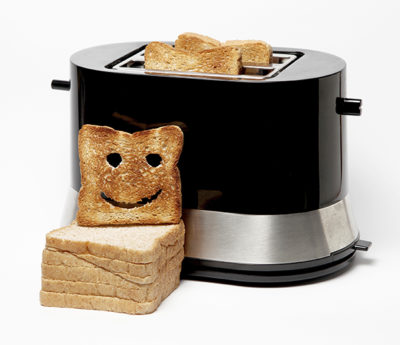
Have Your Bread – And Eat It, Too!
Guest post by Sherri Mankofsky, dietetics intern with Boone Hospital Center WELLAWARE
“I love bread. I love bread. I don’t deny myself bread, I have bread every day.”- Oprah Winfrey
When Oprah enthusiastically endorsed bread on TV last week, some of us felt our heartstrings reverberate with sympathetic glee. Every time she spoke the godly word, I daydreamt of a Willy Wonka-type world made of bread, where you could jump off the loaves like trampolines and eat everything in sight. Why? Because I love bread, too.
Here is my endorsement (although unfortunately mine isn’t likely to make me $12 million richer): It’s rather odd that we feel the need to endorse bread.
When it comes to weight loss, sure, some people are still on the low-fat grind, but with the newer low-carb and gluten-free gigs, most people find themselves torn between the questions “Is bread helpful with weight loss?” and “Should I eat it?”
The Crumby Truth
The truth is not attractive, but it will set you free – conveniently not from bread! Bread is a carbohydrate, meaning that it’s made up of carbon, hydrogen and oxygen on a molecular level. Our bodies break down carbohydrates into the sugar glucose, which goes into our blood stream and then into our cells for energy. Eating a lot of carbohydrates at one time or consuming refined carbohydrates (with the fiber and nutrients taken out) causes a spike in our blood sugars, which may lead to weight gain. Carbohydrates, however, are necessary for our brain to function, so it’s important to eat them in the right amounts.
The Verdict
Eat bread in moderation. But what is moderation and what does it look like?
One slice of bread from a store-bought loaf is one serving, which has about 15 grams (g) of carbohydrates and can have anywhere from 35 to 150 calories, depending on which type of bread you buy.
It’s important to look at the size of your bread portion; a large croissant from a bakery may actually be 2 to 3 servings, and one large bagel from a shop may actually be four! If you can’t tell how many servings you’re eating, read the label, if you can, or compare it to a typical slice of store-bought bread.
Whole Grain is Better than Half a Grain
Whole grain means that all parts of the grain (the bran, germ and endosperm) are used in your product. Many products like white bread use refined grains where the healthier parts – the bran and germ – are taken out. The whole-grain version is the better choice because the fiber and healthy fats in the bran and germ are digested more slowly and decrease potential blood sugar spikes.
Look for products that have the words “whole” and then a type of grain listed as the first ingredient on a label. Also look for products with more than 2g fiber per serving. Note: enriched flour is NOT a whole grain!
“What about gluten? I heard it’s the devil!”
Don’t “baguette” me started with gluten! People without celiac disease don’t like gluten because they think gluten leads to weight gain, gives them bad symptoms or disrupts the cells in their intestines. There has not been significant research on this topic that recommends we should avoid gluten.
Avoid Flaky Research
Research may show correlations between people who eat bread and a bad variable, like weight gain, but just because two variables are correlated does not mean that one caused the other. And just because something happened in lab rats, it doesn’t mean the same will happen in humans, because we’re not physiologically the same as rats. Remember that, to determine nutrition advice, we need multiple studies showing the same conclusion. Always look at the people doing the study. And don’t let any single study fool you!
Remember, everything can fit in a total diet approach. The Academy of Dietetics and Nutrition does not condone cutting out any specific food groups like grains, because each has specific nutrients needed for your body to be at its best!
The Takeaway
Everyone gets bread in moderation! You get a slice! You get a slice! And even you get a slice!